Owen
Forum Replies Created
Viewing 5 posts - 1 through 5 (of 5 total)
-
OwenParticipantGenerally speaking, if you are not getting the whole bird in flight in focus it is probably because you missed on the focus in the first place. Something that I finally figured out after a lot of shooting. At f/5.6 you should have plenty of depth of field to capture the entire bird in focus and certainly at f/8. To get a better feel for this, you might want to play around a bit with a depth of field calculator. A easy one to use that I have played with is at: http://www.dofmaster.com/dofjs.html There are also Apps available if you would prefer. One of the greatest advantages of the change from film to digital is that other than the time spent in editing, it doesn't cost you anything to take a lot of shots. Birds in flight are just hard to get right and I often will throw out 90% of my BIF shots either due to not in focus or just not the right angle or lighting. This Bald Eagle was about a kilometer away and I fired off a stream of shots to get this. It was very humid and at that distance there was enough atmospheric distortion that I was pleased with this sharp of a shot.
 This Bald Eagle was from the same general location but was more like 20 meters away when it unexpectedly appeared and made a pass through the geese I was slowly moving into position to photograph. I just instinctively pulled up and held the shutter down.
This Bald Eagle was from the same general location but was more like 20 meters away when it unexpectedly appeared and made a pass through the geese I was slowly moving into position to photograph. I just instinctively pulled up and held the shutter down. 
 in reply to: Practice Capturing Birds in Flight #723508
in reply to: Practice Capturing Birds in Flight #723508 -
OwenParticipantIf you are on Microsoft, Google Drive works well enough as does Amazon Prime. I'm on an Apple desktop, so I use Apple Photos, which I am happy with. I do still use Google and Amazon to shore photos with others sometimes. Apple Photos is reasonably good for processing and curating and it is free, so I mostly use it.in reply to: Thoughts On Which Cloud Storage To Use? #723352
-
OwenParticipantIf you get good enough at BIF that you start wanting a higher challenge, try photographing butterflies. Not that is a real challenge!in reply to: Practice Matching Your Gear to Your Goals #723350
-
OwenParticipant


 A very important factor is to think hard about what level of equipment is appropriate for you. Probably the first thing to consider is how much money are you intending to put into this? I am not familiar with the others, but I have a lot of hours on the Canon system
I started with an old Canon T3, but soon changed to a Canon 7D II and am extremely happy with it. I have tried a variety of lenses, both Canon and Sigma and would rate the Canon 100-400mm f/4.5-5.6 L IS II to be the best overall choice. With good light the 7D will handle autofocus with the 1.4 teleconverter. I like the crop factor body as I am working semi-professionally from Panjin, Liaoning, China and birds (or any wildlife) are generally very hard to get close to.
I also currently have a Sigma 150-600mm Contemporary lens as my main use lens, which I am happy with, but it is heavy and I intend to end up using it only on tripod with a gimble. Next trip back to the USA I plan to get a new Canon 100-400mm and a 1.4 teleconverter. This all gives me what would be considered to be minimal mid range or semi-professional equipment but it is not necessary to spend as much as I have to obtain some very good photos. (7D about $1400; Canon 100-400mm about $2200; Sigma 18-300mm f/3.5-6.3 about $400; Sigma 150-600 Contemporary about $900)
For a low cost rig as a starter or as good enough for those who just want to share on social media, one could consider something more like the Canon Powershot SX70. I also have one of those and it makes a great travel camera. I often use it to just have something along with me on a walk in the park when I am not really expecting anything special. It is a mirrorless with a non-interchangable lens, but it is a superzoom going from a 35mm equivalent of 21-1365 and is very light weight! Not the best for low light situations, but overall I am very happy with it and you have everything you need to get some excellent birding photos. Best of all, it looks like it is currently going for about $550 USD, a lot less than the $3600 to step up to a minimal 7D birding rig.
The new Canon R5 & R6 give me a serious case of GAS (gear acquisition syndrome), but that like the 5D is stepping up to professional level gear and the prices reflect it. I might justify a 5Ds sometime in the future if the prices drop enough with the introduction of the mirrorless competition.
I probably won't be checking back here much, but I do have a thread on the birdforum.net which is an excellent place to find a supportive world wide community. My thread is at: https://www.birdforum.net/showthread.php?t=301937 and I would be glad to help anyone who posts to it. in reply to: Practice Matching Your Gear to Your Goals #723348
A very important factor is to think hard about what level of equipment is appropriate for you. Probably the first thing to consider is how much money are you intending to put into this? I am not familiar with the others, but I have a lot of hours on the Canon system
I started with an old Canon T3, but soon changed to a Canon 7D II and am extremely happy with it. I have tried a variety of lenses, both Canon and Sigma and would rate the Canon 100-400mm f/4.5-5.6 L IS II to be the best overall choice. With good light the 7D will handle autofocus with the 1.4 teleconverter. I like the crop factor body as I am working semi-professionally from Panjin, Liaoning, China and birds (or any wildlife) are generally very hard to get close to.
I also currently have a Sigma 150-600mm Contemporary lens as my main use lens, which I am happy with, but it is heavy and I intend to end up using it only on tripod with a gimble. Next trip back to the USA I plan to get a new Canon 100-400mm and a 1.4 teleconverter. This all gives me what would be considered to be minimal mid range or semi-professional equipment but it is not necessary to spend as much as I have to obtain some very good photos. (7D about $1400; Canon 100-400mm about $2200; Sigma 18-300mm f/3.5-6.3 about $400; Sigma 150-600 Contemporary about $900)
For a low cost rig as a starter or as good enough for those who just want to share on social media, one could consider something more like the Canon Powershot SX70. I also have one of those and it makes a great travel camera. I often use it to just have something along with me on a walk in the park when I am not really expecting anything special. It is a mirrorless with a non-interchangable lens, but it is a superzoom going from a 35mm equivalent of 21-1365 and is very light weight! Not the best for low light situations, but overall I am very happy with it and you have everything you need to get some excellent birding photos. Best of all, it looks like it is currently going for about $550 USD, a lot less than the $3600 to step up to a minimal 7D birding rig.
The new Canon R5 & R6 give me a serious case of GAS (gear acquisition syndrome), but that like the 5D is stepping up to professional level gear and the prices reflect it. I might justify a 5Ds sometime in the future if the prices drop enough with the introduction of the mirrorless competition.
I probably won't be checking back here much, but I do have a thread on the birdforum.net which is an excellent place to find a supportive world wide community. My thread is at: https://www.birdforum.net/showthread.php?t=301937 and I would be glad to help anyone who posts to it. in reply to: Practice Matching Your Gear to Your Goals #723348 -
OwenParticipantA 1.4 teleconverter will cause a loss of light. Specifically, it will result in only half the light reaching the sensor (effectively increases the f stop by one full stop). the 2x teleconverter will cost you another stop of light. In most Canon SLR cameras the autofocus only works up to f/8, hence any Rebel series is likely to have problems both with image noise from the higher ISO required and with not being able or at least struggling to autofocus. The specific lens you are using is a factor also. Check out the Wiki page for details and charts showing compatibility. https://en.wikipedia.org/wiki/Canon_Extender_EFin reply to: Practice Matching Your Gear to Your Goals #723346
Viewing 5 posts - 1 through 5 (of 5 total)
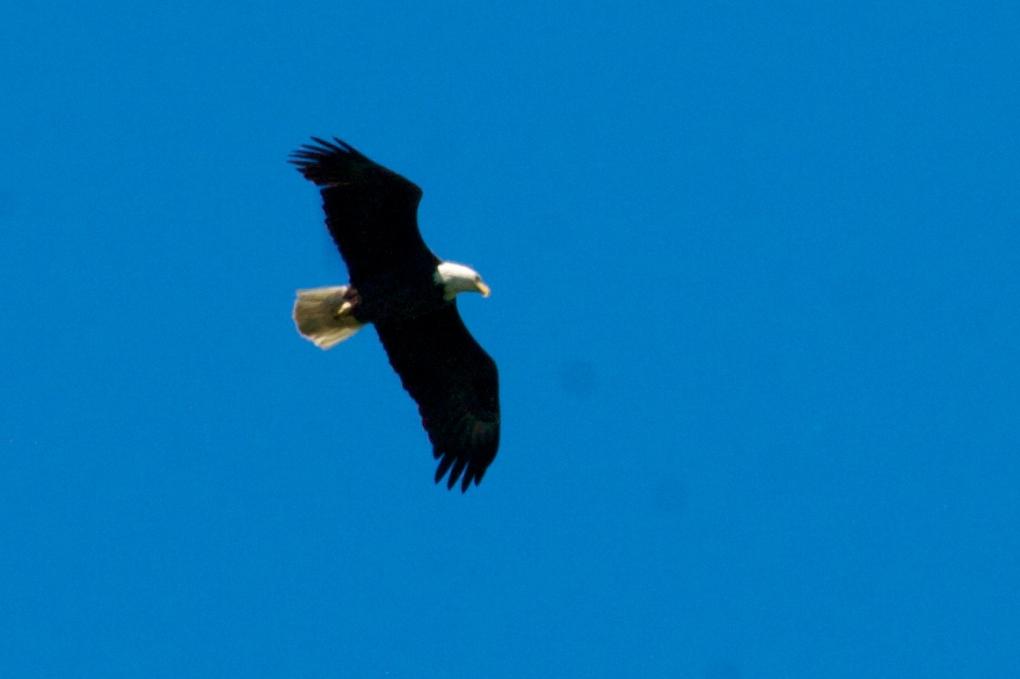 This Bald Eagle was from the same general location but was more like 20 meters away when it unexpectedly appeared and made a pass through the geese I was slowly moving into position to photograph. I just instinctively pulled up and held the shutter down.
This Bald Eagle was from the same general location but was more like 20 meters away when it unexpectedly appeared and made a pass through the geese I was slowly moving into position to photograph. I just instinctively pulled up and held the shutter down. 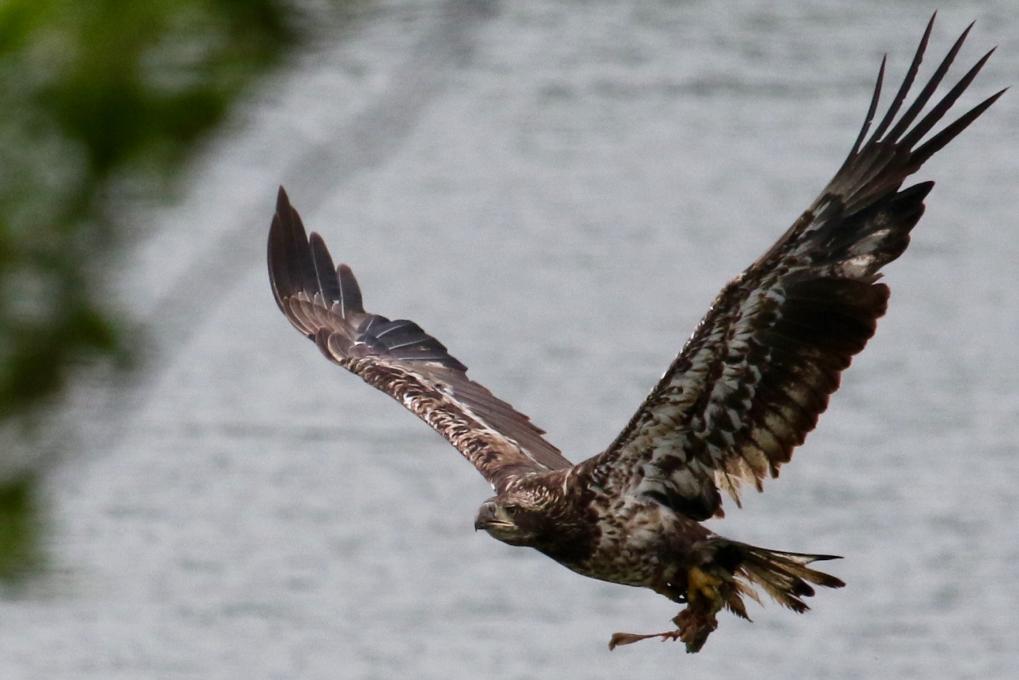
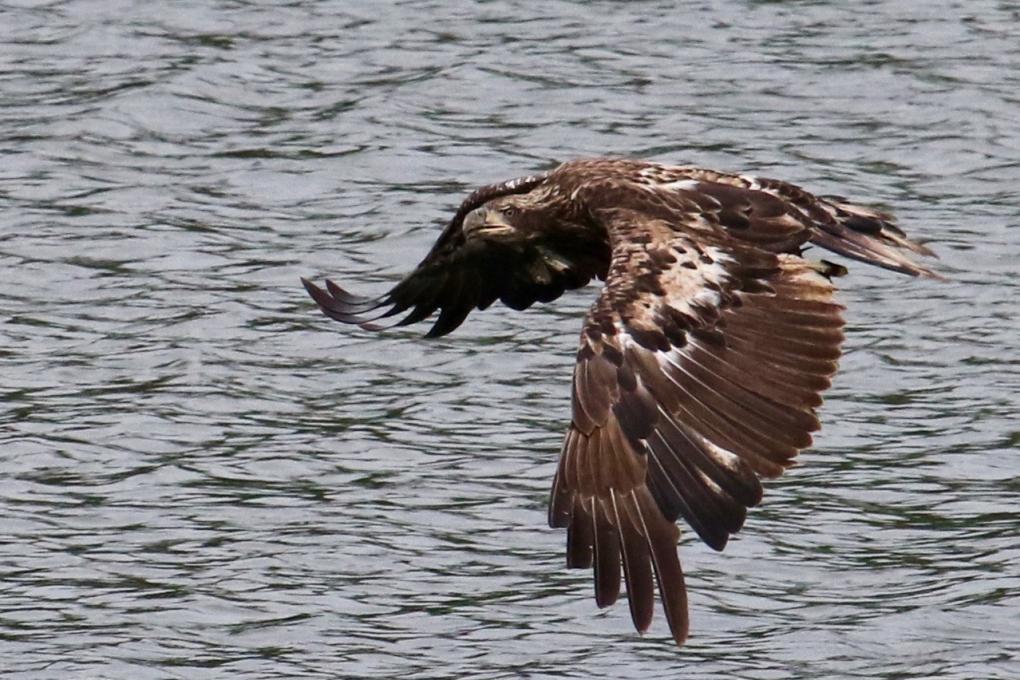
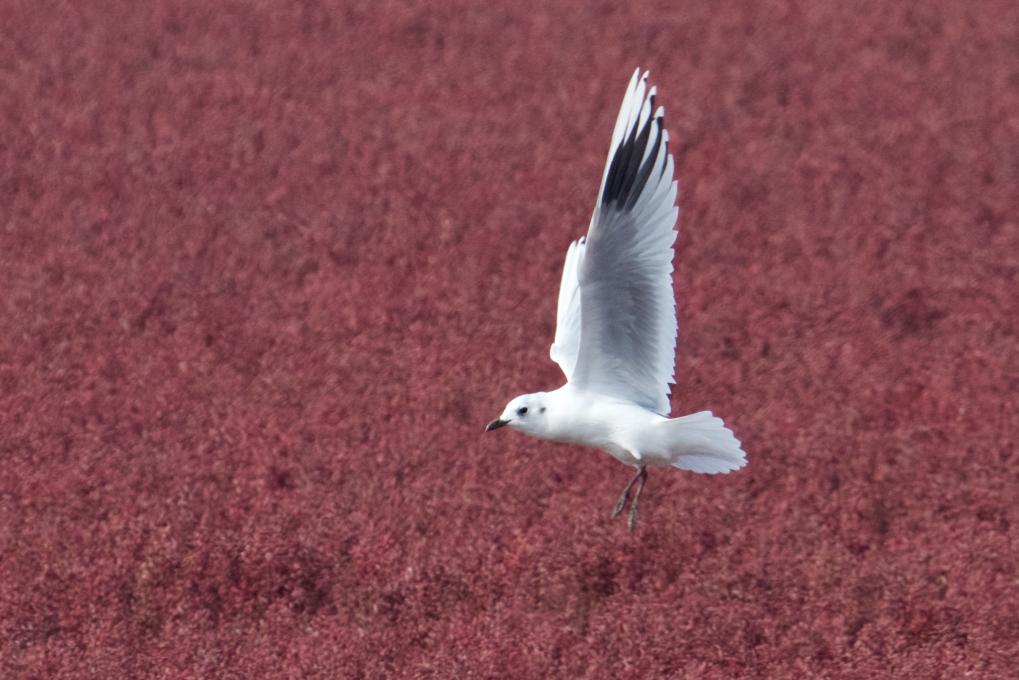
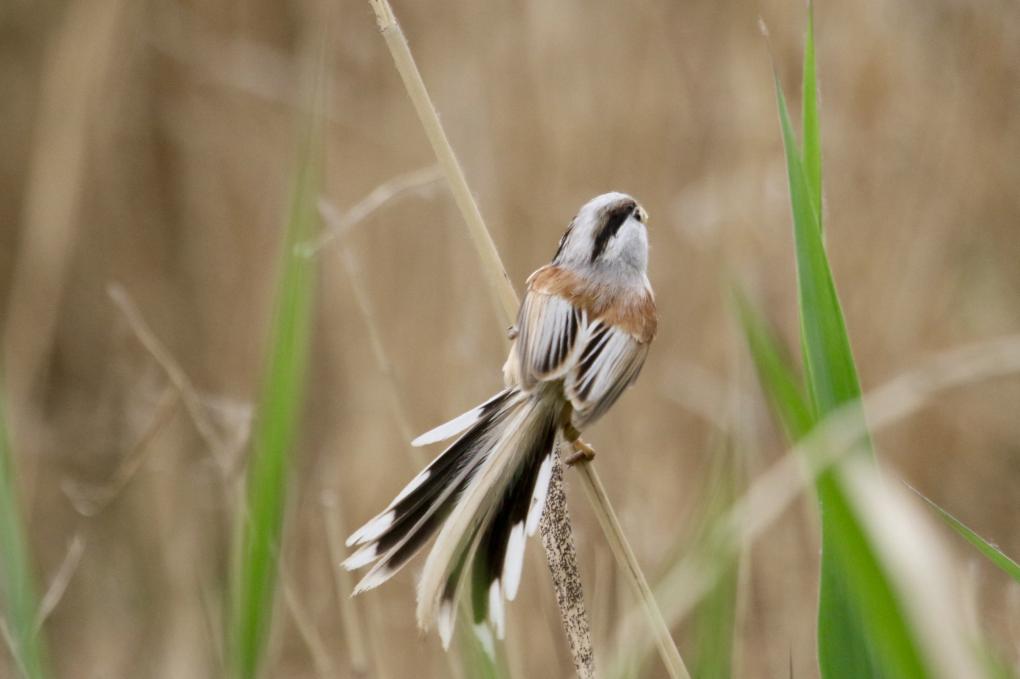
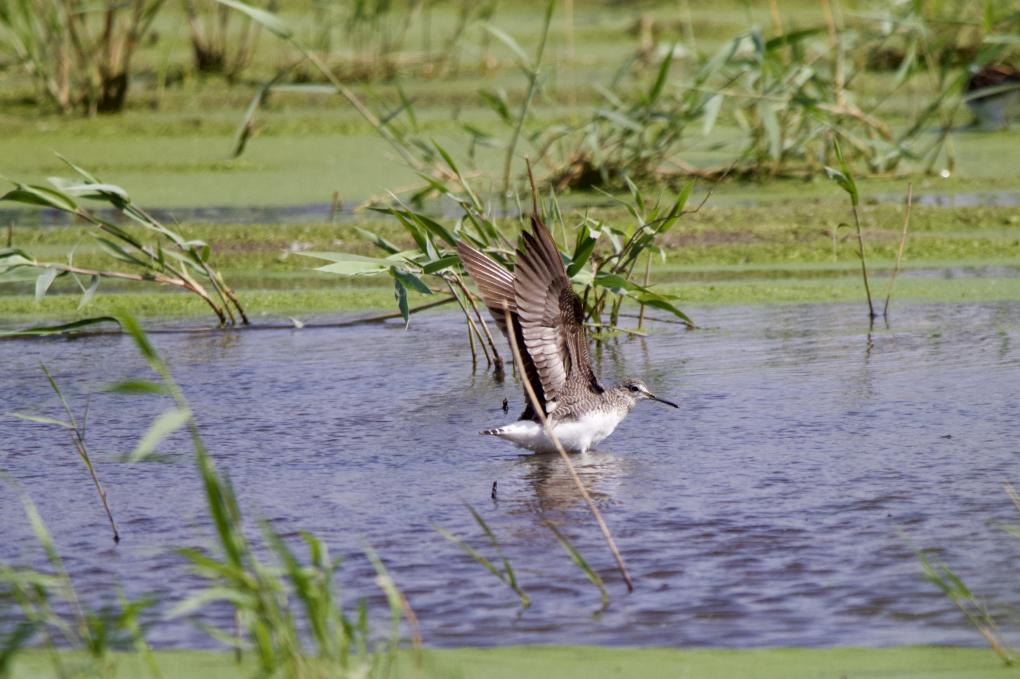 A very important factor is to think hard about what level of equipment is appropriate for you. Probably the first thing to consider is how much money are you intending to put into this? I am not familiar with the others, but I have a lot of hours on the Canon system
I started with an old Canon T3, but soon changed to a Canon 7D II and am extremely happy with it. I have tried a variety of lenses, both Canon and Sigma and would rate the Canon 100-400mm f/4.5-5.6 L IS II to be the best overall choice. With good light the 7D will handle autofocus with the 1.4 teleconverter. I like the crop factor body as I am working semi-professionally from Panjin, Liaoning, China and birds (or any wildlife) are generally very hard to get close to.
I also currently have a Sigma 150-600mm Contemporary lens as my main use lens, which I am happy with, but it is heavy and I intend to end up using it only on tripod with a gimble. Next trip back to the USA I plan to get a new Canon 100-400mm and a 1.4 teleconverter. This all gives me what would be considered to be minimal mid range or semi-professional equipment but it is not necessary to spend as much as I have to obtain some very good photos. (7D about $1400; Canon 100-400mm about $2200; Sigma 18-300mm f/3.5-6.3 about $400; Sigma 150-600 Contemporary about $900)
For a low cost rig as a starter or as good enough for those who just want to share on social media, one could consider something more like the Canon Powershot SX70. I also have one of those and it makes a great travel camera. I often use it to just have something along with me on a walk in the park when I am not really expecting anything special. It is a mirrorless with a non-interchangable lens, but it is a superzoom going from a 35mm equivalent of 21-1365 and is very light weight! Not the best for low light situations, but overall I am very happy with it and you have everything you need to get some excellent birding photos. Best of all, it looks like it is currently going for about $550 USD, a lot less than the $3600 to step up to a minimal 7D birding rig.
The new Canon R5 & R6 give me a serious case of GAS (gear acquisition syndrome), but that like the 5D is stepping up to professional level gear and the prices reflect it. I might justify a 5Ds sometime in the future if the prices drop enough with the introduction of the mirrorless competition.
I probably won't be checking back here much, but I do have a thread on the birdforum.net which is an excellent place to find a supportive world wide community. My thread is at: https://www.birdforum.net/showthread.php?t=301937 and I would be glad to help anyone who posts to it.
A very important factor is to think hard about what level of equipment is appropriate for you. Probably the first thing to consider is how much money are you intending to put into this? I am not familiar with the others, but I have a lot of hours on the Canon system
I started with an old Canon T3, but soon changed to a Canon 7D II and am extremely happy with it. I have tried a variety of lenses, both Canon and Sigma and would rate the Canon 100-400mm f/4.5-5.6 L IS II to be the best overall choice. With good light the 7D will handle autofocus with the 1.4 teleconverter. I like the crop factor body as I am working semi-professionally from Panjin, Liaoning, China and birds (or any wildlife) are generally very hard to get close to.
I also currently have a Sigma 150-600mm Contemporary lens as my main use lens, which I am happy with, but it is heavy and I intend to end up using it only on tripod with a gimble. Next trip back to the USA I plan to get a new Canon 100-400mm and a 1.4 teleconverter. This all gives me what would be considered to be minimal mid range or semi-professional equipment but it is not necessary to spend as much as I have to obtain some very good photos. (7D about $1400; Canon 100-400mm about $2200; Sigma 18-300mm f/3.5-6.3 about $400; Sigma 150-600 Contemporary about $900)
For a low cost rig as a starter or as good enough for those who just want to share on social media, one could consider something more like the Canon Powershot SX70. I also have one of those and it makes a great travel camera. I often use it to just have something along with me on a walk in the park when I am not really expecting anything special. It is a mirrorless with a non-interchangable lens, but it is a superzoom going from a 35mm equivalent of 21-1365 and is very light weight! Not the best for low light situations, but overall I am very happy with it and you have everything you need to get some excellent birding photos. Best of all, it looks like it is currently going for about $550 USD, a lot less than the $3600 to step up to a minimal 7D birding rig.
The new Canon R5 & R6 give me a serious case of GAS (gear acquisition syndrome), but that like the 5D is stepping up to professional level gear and the prices reflect it. I might justify a 5Ds sometime in the future if the prices drop enough with the introduction of the mirrorless competition.
I probably won't be checking back here much, but I do have a thread on the birdforum.net which is an excellent place to find a supportive world wide community. My thread is at: https://www.birdforum.net/showthread.php?t=301937 and I would be glad to help anyone who posts to it.